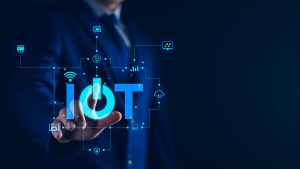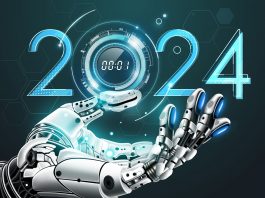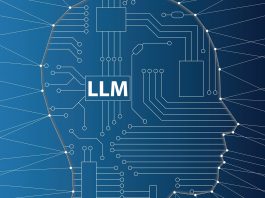Jonathan Boakes, Managing Director, UK at Infinum, details how success in AI and IoT lies with a solid business strategy.
Artificial Intelligence (AI) and the Internet of Things (IoT) have become two of the most powerful digital transformation tools.
With new connected devices being developed daily, Allied Market Research forecasts the global IoT market will reach $4.4 trillion by 2026, up from $740 billion in 2020. The market for AI is also expected to show strong growth in the coming decade. Its nearly $100bn value is set to grow twentyfold by 2030, up to almost $2tr.
AI and IoT present a whole realm of opportunities, challenges and potential downfalls for businesses, so how can companies be confident that digital transformation will succeed?
AI and IoT success in practice
From the micro-sensors found within Bluetooth-connected toothbrushes to the software that powers complex manufacturing machinery on an assembly line, IoT tech is diverse and capable of processing huge amounts of data between devices.
The benefits of AI and IoT are not just about the data quantity but the capacity to collect volumes of quality data close to the source where it’s being produced. This works through IoT components that collect, process, and share data from various sources or endpoints, providing a rounded data narrative rather than one source alone.
For example, NutriU is a central hub for kitchen appliances that helps people control their smart appliances remotely through their phones, discover recipes, and receive personalised cooking recommendations in a single app. The platform’s Machine Learning-based recommendation system suggests recipes tailored to individual tastes. At the same time, its AI and IoT integration allows users to manage their Philips kitchen gadgets from anywhere, enabling convenient and customised cooking experiences. This is being used in 37 countries and 30 languages, transforming how people prepare meals and interact with their devices.
The untapped potential of AI and IoT holds promise for cost savings, personalised experiences, efficiency gains, and improved interactions for both businesses and consumers. While progress is underway in some sectors, there’s further ground to cover and opportunities to explore.
How healthcare is leading the revolution
AI and IoT are teaming up in healthcare to transform patient care, making it one of IoT’s fastest-growing sectors. Being a highly regulated and complex industry, the Internet of Medical Things (IoMT) innovation requires extensive research, testing, and adherence to strict standards for digital solutions.
Examples of IoMT are medical devices and wearables, such as those that monitor real-time health data, such as heart rate, blood pressure, body temperature, and glucose levels. Obtaining this comprehensive health data allows chronic conditions to be monitored as patients go about their daily lives.
Recent research shows 75% of healthcare leaders plan to invest in AI in the next 12 months. Given the innovations healthcare has spearheaded with IoT, this sector has enormous potential to lead the revolution with both elements of this cutting-edge tech.
Being perceptive to the AI hype
However, leaders across sectors must be wary of embracing AI and IoT without a clear strategy. Research shows that while nine out of ten CTOs plan to invest in AI within the next 12 months, nearly 75% admit they are unprepared to do so.
Aside from the obvious challenges associated with implementing a new technology that the business isn’t ready for, companies need to exercise collective caution as everyone looks to jump on the bandwagon.
When every company says they’re using AI to change their industry, it raises the risk of sky-high expectations. It becomes a recipe for customer retention problems, particularly if it fails due to a lack of understanding or poor implementation.
In 2024, businesses must not allow industry peer pressure to lead them to rush into AI for the sake of it. Experience tells us that you can either begin with a clear strategy or begin to fail.
Instead, with the right strategy and implementation, AI has the potential to be game-changing for businesses of all sizes and industries.
Tread with spirited caution
When building AI and IoT solutions, you’re not just handling the user, app, and cloud but also multiple connected devices, all exchanging information in real-time in a culmination of hardware and software. Because of this, it can be difficult for companies with legacy systems to make the transition smoothly.

Start by thinking about your users. Is your IoT solution compelling enough to cause users to switch away from their current approach to the problem? Sometimes, the dumb solution is smarter than the smart one. Does your proposed business model align with the amount and method your customer might pay?
Successful IoT implementation is a piecewise game that requires you to think around the next corner. Staying ahead of the curve in IoT means more than just keeping up with the latest trends.
It involves creating systems that are antifragile and capable of withstanding changes at a minimised change cost.
Additionally, having the means to source volumes of data is just one element. An IoT platform can bring this data to life, allowing businesses to utilise it for specific needs. These can be categorised into cloud-based, edge-based, and hybrid platforms. Each can cater to scalability, latency, reliability, privacy, and security requirements.
Above all else, there must be a careful assessment of the device requirements regarding the scale needed and how this will be deployed within core target markets, with factors like device authentication, identity management, and data security at the top of mind.
Scaling isn’t simply increasing production volume. It requires transforming your entire digital ecosystem to continuously deliver value to a potentially large base over several years. IoT products are still digital, and their development continues beyond production. Continuously improving and maintaining these products is essential for long-term success.
Beyond just installing sensors and models, digital transformation requires a deeper understanding of extracting, analysing, and positioning the data generated by these sensors through software, bridging between the user and the device.
The entire industry is fixated on AI’s potential for revolutionising processes, but the true game-changer lies in coupling it with IoT. However, success demands a solid strategy and an unwavering dedication to consistently provide value to end-users via ongoing research, identification, and adaptation.









